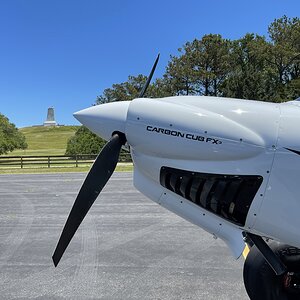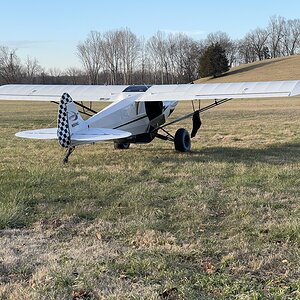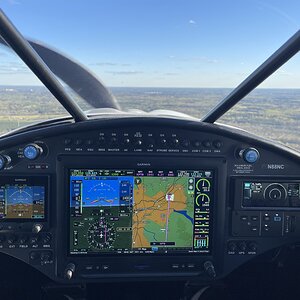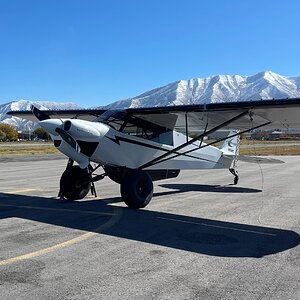spinproof
Well-known member
- Joined
- Oct 19, 2002
- Posts
- 774
Jets-for-Jobs and its Impact on the ASA and Comair Pilots
Introduction
Imagine if one morning you awoke to the news that ALPA had created a “privileged” class of pilots within the ASA and Comair ranks. These pilots would work under a “different” contract and would have their own seniority system, their own pay scales, and reserved seats in the highest paying aircraft. Add to that, if you refused to accept these terms, your own union would divert the future growth, including your next upgrade, to non-ALPA carriers like Chautauqua.
No imagination is required. This is the future based upon ALPA's current bargaining trends.[1] This is what happens when your own union ignores its duties and says that your jobs, your flying, and your futures can be used by “mainline” pilots as their bargaining capital. This is what has happened at other carriers where ALPA's “regional” pilots failed to defend their rights in advance of mainline concessionary bargaining. This is what can happen when ALPA's leaders expect the ASA and Comair pilots to “pay” for representation that is already owed. This is the reality of “Jets-for-Jobs”.
Jets-for-Jobs Defined
Jets-for-Jobs is characterized by mainline pilots unilaterally imposing, or coercing, special employment rights at other carriers flying under “their” brand in exchange for modifying the restrictions they have unfairly placed on those carriers. They unilaterally create, in effect, a “contract within a contract” making additional flying opportunities contingent upon the creation a “preferred” class of mainline pilots within the affiliate's ranks. While Jets-for-Jobs may have different aliases, most notably “brand scope,” it can be easily recognized by the following indicia:
- Unilaterally imposed by mainline interests.
- Additional growth or aircraft linked to special seniority rights.
- Creation of “preferred” class of pilots.
- Creation of a “contract within a contract.”
- “Reserved” seating in highest paying equipment.
- Special bidding rights for “mainline” pilots.
- Special rates of pay for “mainline” pilots.
- Special furlough protections for “mainline” pilots.
- Coerced “regional” ratification process.
- “Mainline” pilots left in full control of all “brand” flying.
ALPA's Conflict of Interest
As our bargaining agent, ALPA is obligated to promote our interests and to protect the integrity our working agreements. But by negotiating “Jets-for-Jobs” agreements, the union itself undermines and works against the very same pilots it is obligated to defend.
- “Mainline” terms would violate pre-existing ASA and Comair contracts.
- Creation of “preferred” class of pilot would violate ALPA's duty of fair representation.
- Pilot ratification, if allowed, conducted under duress created by the union.
- Union supports and condones unilateral imposition of special conditions.
- “Reserved” seats violates filling of vacancies.
- Union condones use of alter ego carriers.
- Special furlough protections violate seniority.
- Union threatens or actually diverts flying from ASA/CMR.
- Special pay rates violate compensation sections.
- Union supports mainline manipulation of “regional” flying and equipment.
Economic Impact of Jets for Jobs
In order to “sell” Jets-for-Jobs, or Brand Scope, to its “regional” constituents, ALPA promises that such schemes will create growth at any carriers that accept its terms. However, the benefits of such “growth” are illusionary because the economic benefits are siphoned off by the creation of a preferred class of “mainline” pilots.
1.Reduction of Advancement Opportunities: A pilot's economic future is inexorably linked to his or her ability to advance into higher paying positions. Jets-for-Jobs creates “reserved” seats which require that a majority (if not all) of the additional growth be staffed by “mainline” pilots, thus denying the “regional” pilots the economic benefits.
2.Specter of Additional Mainline Furloughs: It's no secret that management's efforts to increase mainline productivity could result in hundreds of additional surplus positions. This means the potential number of “regional” displacements under Jets-for-Jobs will not be small or temporary. Any promise of future mainline positions (i.e. flow-through) is at best just that…a promise.
3.Proliferation of Alter-egos: When ALPA demands that its own members accept Jets-for-Jobs on a “take it or leave it” basis, the end result is the creation or growth of alter-ego carriers as ALPA encourages other regional airlines to “bid” against its own members. In the first year of “Jets-for-Jobs” at USAirways, ALPA supported the creation or growth of four additional “regional” airlines which competed directly with USAirway's wholly owned carriers.[2] This condition is precisely what ALPA's “scope” and “alter-ego” policies are supposed to prevent.
4.Downward Pressure on “Regional” Pay Rates: Jets-for-Jobs' special provisions require that modifications be made to the affected “regional” contracts. At USAirways, the PDT, ALG, and PSA pilots were forced to accept steep concessions as part of a “package” deal—orchestrated by ALPA—their own union! Further, the administrative and economic burdens imposed by Jets-for-Jobs require even more “offsets” to neutralize the impact of these expenses. Offsets such as “one-seat one-pay-scale” illustrate the kind of contractual devices that cause a net reduction of pay and advancement opportunities.[3]
Your Job, Your Career, and How to Protect it
Since Jets-for-Jobs and other “employment” schemes are linked to billion-dollar mainline agreements, it's difficult to prevent their implementation after the completion of mainline bargaining. While the ASA and Comair pilots might be given the token chance to accept or reject such terms, ALPA's own whip-saw tactics means that a rejection of Jets-for-Jobs will only result in the diversion of flying to another carrier.
The only way to prevent the implementation of Jets-for-Jobs is to ensure that it's not negotiated in the first place. This requires that ALPA uphold its duties to the ASA and Comair pilots before, during, and after the mainline negotiations. As history proves, protests “after the fact” are no substitute for equal and fair representation.
Unlike other less-fortunate pilot groups, the ASA and Comair pilots have mounted an aggressive defense of their rights intended to compel ALPA to uphold its lawful duties. Likewise, the ASA and Comair pilots can arm themselves with the facts and continue to demand full accountability through, and from, their elected representatives.
As proud union members we are concerned about the plight of the Delta furloughees. In fact, we have long maintained that ALPA's ill-conceived scope policies have contributed to the wave of mainline furloughs. Therefore, true scope reform, not further abuses, is the only way to restore full employment to our industry.
--------------------------------------------------------------------------------
[1] ALPA has already imposed “Jets for Jobs” agreements at USAirways and United. At the time of publication, the Northwest MEC says it's preparing a bargaining proposal which would permit mainline pilots to fly additional 70-seat jets in the NWA “system.”
[2] Mid-Atlantic, Republic, Midway, and Freedom.
[3] Chautauqua and Mesa made substantial changes in first officer pay and bidding rights following the imposition of Jets for Jobs.
[font=Arial, Helv][size=-1][/size][/font]Copyright Dan Ford
Introduction
Imagine if one morning you awoke to the news that ALPA had created a “privileged” class of pilots within the ASA and Comair ranks. These pilots would work under a “different” contract and would have their own seniority system, their own pay scales, and reserved seats in the highest paying aircraft. Add to that, if you refused to accept these terms, your own union would divert the future growth, including your next upgrade, to non-ALPA carriers like Chautauqua.
No imagination is required. This is the future based upon ALPA's current bargaining trends.[1] This is what happens when your own union ignores its duties and says that your jobs, your flying, and your futures can be used by “mainline” pilots as their bargaining capital. This is what has happened at other carriers where ALPA's “regional” pilots failed to defend their rights in advance of mainline concessionary bargaining. This is what can happen when ALPA's leaders expect the ASA and Comair pilots to “pay” for representation that is already owed. This is the reality of “Jets-for-Jobs”.
Jets-for-Jobs Defined
Jets-for-Jobs is characterized by mainline pilots unilaterally imposing, or coercing, special employment rights at other carriers flying under “their” brand in exchange for modifying the restrictions they have unfairly placed on those carriers. They unilaterally create, in effect, a “contract within a contract” making additional flying opportunities contingent upon the creation a “preferred” class of mainline pilots within the affiliate's ranks. While Jets-for-Jobs may have different aliases, most notably “brand scope,” it can be easily recognized by the following indicia:
- Unilaterally imposed by mainline interests.
- Additional growth or aircraft linked to special seniority rights.
- Creation of “preferred” class of pilots.
- Creation of a “contract within a contract.”
- “Reserved” seating in highest paying equipment.
- Special bidding rights for “mainline” pilots.
- Special rates of pay for “mainline” pilots.
- Special furlough protections for “mainline” pilots.
- Coerced “regional” ratification process.
- “Mainline” pilots left in full control of all “brand” flying.
ALPA's Conflict of Interest
As our bargaining agent, ALPA is obligated to promote our interests and to protect the integrity our working agreements. But by negotiating “Jets-for-Jobs” agreements, the union itself undermines and works against the very same pilots it is obligated to defend.
- “Mainline” terms would violate pre-existing ASA and Comair contracts.
- Creation of “preferred” class of pilot would violate ALPA's duty of fair representation.
- Pilot ratification, if allowed, conducted under duress created by the union.
- Union supports and condones unilateral imposition of special conditions.
- “Reserved” seats violates filling of vacancies.
- Union condones use of alter ego carriers.
- Special furlough protections violate seniority.
- Union threatens or actually diverts flying from ASA/CMR.
- Special pay rates violate compensation sections.
- Union supports mainline manipulation of “regional” flying and equipment.
Economic Impact of Jets for Jobs
In order to “sell” Jets-for-Jobs, or Brand Scope, to its “regional” constituents, ALPA promises that such schemes will create growth at any carriers that accept its terms. However, the benefits of such “growth” are illusionary because the economic benefits are siphoned off by the creation of a preferred class of “mainline” pilots.
1.Reduction of Advancement Opportunities: A pilot's economic future is inexorably linked to his or her ability to advance into higher paying positions. Jets-for-Jobs creates “reserved” seats which require that a majority (if not all) of the additional growth be staffed by “mainline” pilots, thus denying the “regional” pilots the economic benefits.
2.Specter of Additional Mainline Furloughs: It's no secret that management's efforts to increase mainline productivity could result in hundreds of additional surplus positions. This means the potential number of “regional” displacements under Jets-for-Jobs will not be small or temporary. Any promise of future mainline positions (i.e. flow-through) is at best just that…a promise.
3.Proliferation of Alter-egos: When ALPA demands that its own members accept Jets-for-Jobs on a “take it or leave it” basis, the end result is the creation or growth of alter-ego carriers as ALPA encourages other regional airlines to “bid” against its own members. In the first year of “Jets-for-Jobs” at USAirways, ALPA supported the creation or growth of four additional “regional” airlines which competed directly with USAirway's wholly owned carriers.[2] This condition is precisely what ALPA's “scope” and “alter-ego” policies are supposed to prevent.
4.Downward Pressure on “Regional” Pay Rates: Jets-for-Jobs' special provisions require that modifications be made to the affected “regional” contracts. At USAirways, the PDT, ALG, and PSA pilots were forced to accept steep concessions as part of a “package” deal—orchestrated by ALPA—their own union! Further, the administrative and economic burdens imposed by Jets-for-Jobs require even more “offsets” to neutralize the impact of these expenses. Offsets such as “one-seat one-pay-scale” illustrate the kind of contractual devices that cause a net reduction of pay and advancement opportunities.[3]
Your Job, Your Career, and How to Protect it
Since Jets-for-Jobs and other “employment” schemes are linked to billion-dollar mainline agreements, it's difficult to prevent their implementation after the completion of mainline bargaining. While the ASA and Comair pilots might be given the token chance to accept or reject such terms, ALPA's own whip-saw tactics means that a rejection of Jets-for-Jobs will only result in the diversion of flying to another carrier.
The only way to prevent the implementation of Jets-for-Jobs is to ensure that it's not negotiated in the first place. This requires that ALPA uphold its duties to the ASA and Comair pilots before, during, and after the mainline negotiations. As history proves, protests “after the fact” are no substitute for equal and fair representation.
Unlike other less-fortunate pilot groups, the ASA and Comair pilots have mounted an aggressive defense of their rights intended to compel ALPA to uphold its lawful duties. Likewise, the ASA and Comair pilots can arm themselves with the facts and continue to demand full accountability through, and from, their elected representatives.
As proud union members we are concerned about the plight of the Delta furloughees. In fact, we have long maintained that ALPA's ill-conceived scope policies have contributed to the wave of mainline furloughs. Therefore, true scope reform, not further abuses, is the only way to restore full employment to our industry.
--------------------------------------------------------------------------------
[1] ALPA has already imposed “Jets for Jobs” agreements at USAirways and United. At the time of publication, the Northwest MEC says it's preparing a bargaining proposal which would permit mainline pilots to fly additional 70-seat jets in the NWA “system.”
[2] Mid-Atlantic, Republic, Midway, and Freedom.
[3] Chautauqua and Mesa made substantial changes in first officer pay and bidding rights following the imposition of Jets for Jobs.
[font=Arial, Helv][size=-1][/size][/font]Copyright Dan Ford





